A definitive guide to sales objectives
It’s not hard to set sales objectives. Any sales leader can ask their team to increase sales by 50% or cut customer churn in half.
What’s difficult is setting achievable, effective sales goals that have a genuine impact on your company’s long-term strategy.
A great sales objective doesn’t just give your team direction or motivate them to sell more — it also improves a portion of your sales funnel and keeps the company moving forward.
Setting these kinds of sales objectives can be hard, especially when you do it for the first time. But that’s why we’re here to help.
By the end of this article, you’ll understand the following:
- Why good sales objectives are vital
- What different sales objectives look like
- How to set achievable sales objectives
Let’s dive in.
What are sales objectives, and why do you need them?
A sales objective is a specific result you want your sales team to achieve.
These objectives should be easily defined and realistic so that sales reps understand what actions they need to take to achieve the objective and that they believe they can achieve them.
A sales objective is not the same as a quota (although some quotas can also be sales objectives). Quotas are sales targets for reps, while sales objectives can be much broader.
For example, sales reps might have a quota to book 10 meetings every week. But their sales objective may be to increase their average deal size by 10% this quarter.
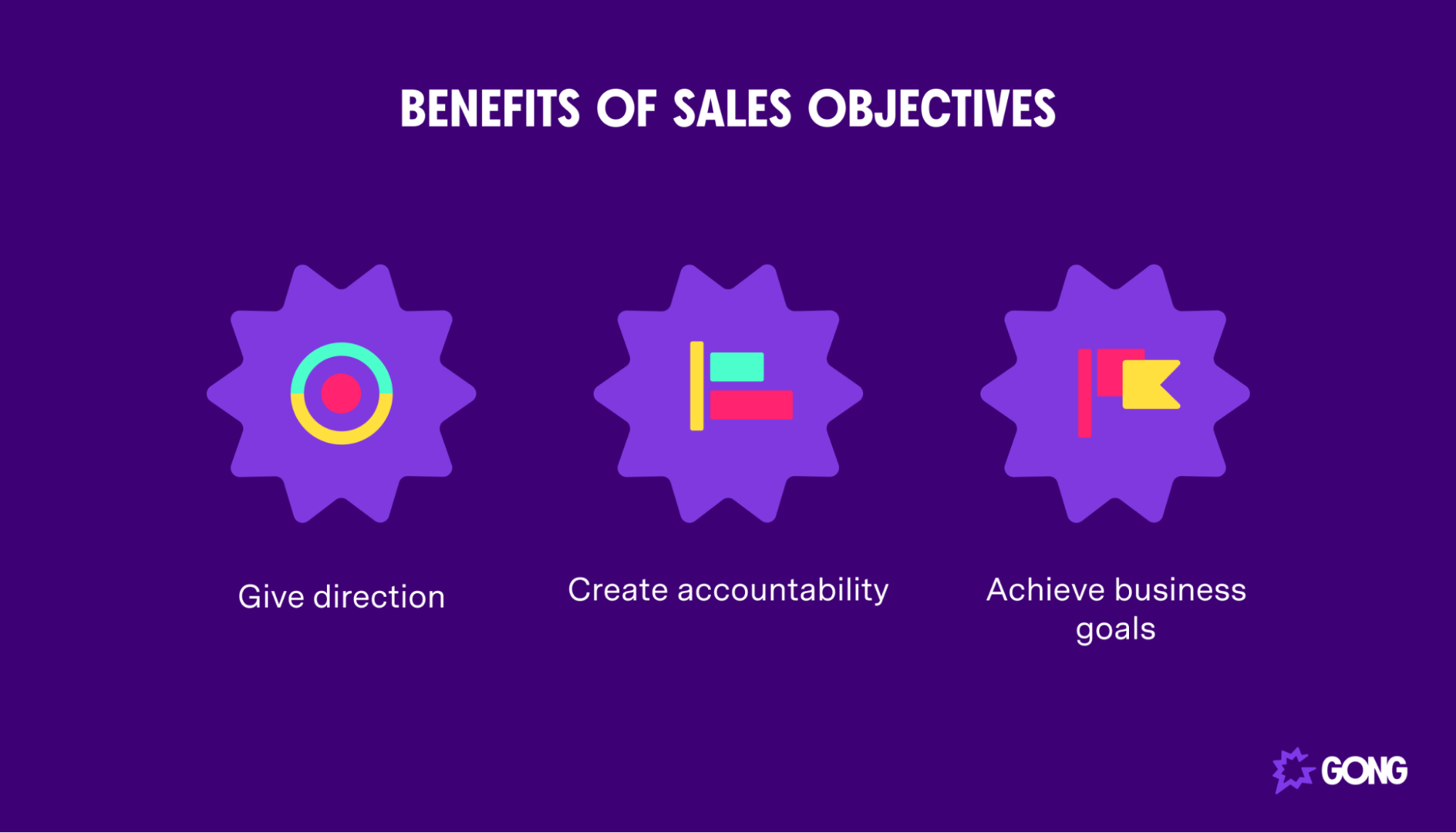
Sales objectives are essential for three core reasons. They:
- Give direction
- Create accountability
- Achieve business goals
Give direction
Your sales team is aimless without clear sales objectives. Sure, they’ll still try to close qualified leads and hit their quotas, but you won’t have much say in how they do it. By creating sales objectives, you can compel your team to improve specific parts of the sales process or a certain type of account.
Create accountability
Sales objectives help create accountability and give you a way to measure your team’s performance beyond their quotas. Sure, they may be hitting their numbers, but are they actually helping the business meet its revenue goal? Do they facilitate business growth? Sales objectives can reveal all.
Sales objectives also give your team the impetus to step up to the plate, judge their own performance, and take steps to improve their win rate. A good sales objective can be just as motivating as a good commission structure.
Achieve business goals
Finally, sales objectives can be used to achieve key business goals. Of course, you want to increase your average win rate and drive as much revenue as possible, but you may also be tasked with increasing market share or improving the number of sales of a particular product. Use sales objectives to meet these goals.
Types of sales objectives
While there’s no shortage of sales objectives you can set, each one will typically fall into one of the following categories.
Sales-focused objectives
Objectives that encourage your rep to complete sales activities or meet a sales goal are the most common kind of sales objective.
In some cases, sales-focused objectives are similar to quotas. You could set reps a target to close a certain value of the sales pipeline each period, for instance. In other cases, you could require sales professionals to increase their deal size or shorten their sales cycle.
Productivity-focused objectives
Sales efficiency is key for a high-performing sales team, especially when reps spend most of their time not selling.
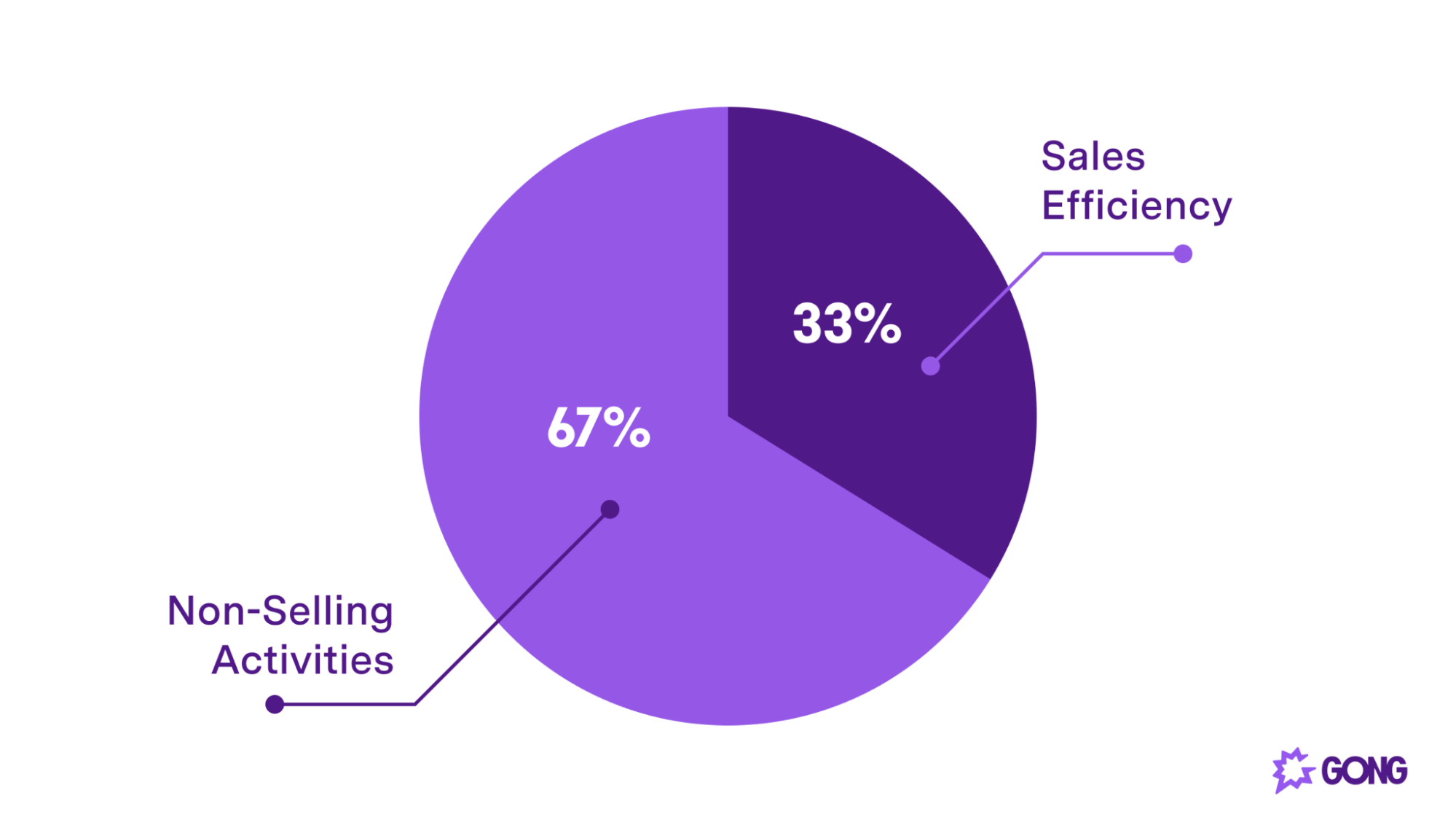
One way to make your sales team more efficient and productive is by setting sales productivity objectives or activity goals.
These are sales objectives related to the activities reps complete every day as salespeople — things like making cold calls, updating your CRM, and booking product demos.
What’s great about productivity-focused objectives is they’re totally within a salesperson’s control. They aren’t reliant on outside factors, like the whim of a client. If a rep fails, it’s down to them.
Buyer-focused objectives
Buyer-focused objectives are the final sales objectives category. These are objectives that directly relate to you, your buyers, and buyers’ behavior.
For instance, you could task your sales reps with reducing churn rate, increasing customer lifetime value, or reducing the new customer acquisition cost.
Because you rely on the actions of a third party, buyer-focused objectives can be quite a bit harder to achieve than productivity and sales-focused objectives. But that’s no reason to avoid them.
How to set sales objectives
Don’t worry — you don’t have to go through some long, convoluted process to create great sales objectives. You just have to follow five steps.
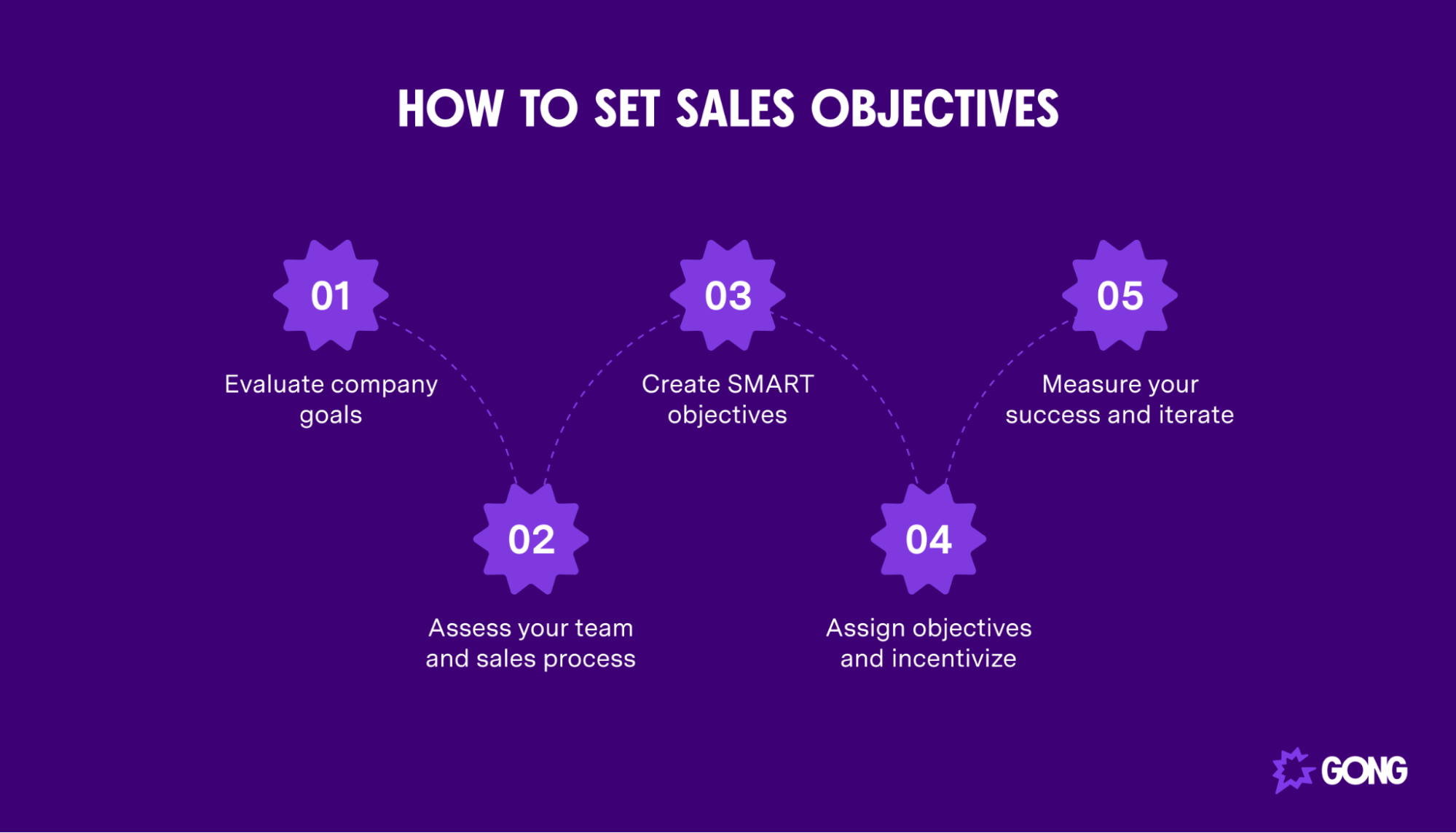
Set sales objectives by:
- Evaluating your company goals
- Assessing your team and your sales process
- Creating SMART objectives
- Assigning objectives and incentivizing reps
- Measuring your success and iterating where necessary.
1. Evaluate company goals
The best sales objectives are linked to your sales organization’s wider goals. Are you trying to enter a new target market, for instance? Or launch a new product? If so, then try to relate the objectives you set to these goals.
This will not only help you make your objectives super relevant, but it will also allow you to focus on the objectives that matter most.
2. Assess your team and sales process
As a sales manager, you need to understand where you’re coming from before you can work out where you should go and how you should get there.
When it comes to sales objectives, that means assessing the performance of your sales department and your existing sales process. How are reps performing? What are they struggling with? At which stage of your pipeline do the highest number of customers fall out? These are the kinds of questions you need to answer.
Use sales KPIs to measure the performance of your sales process and individual team members (if you aren’t doing so already).
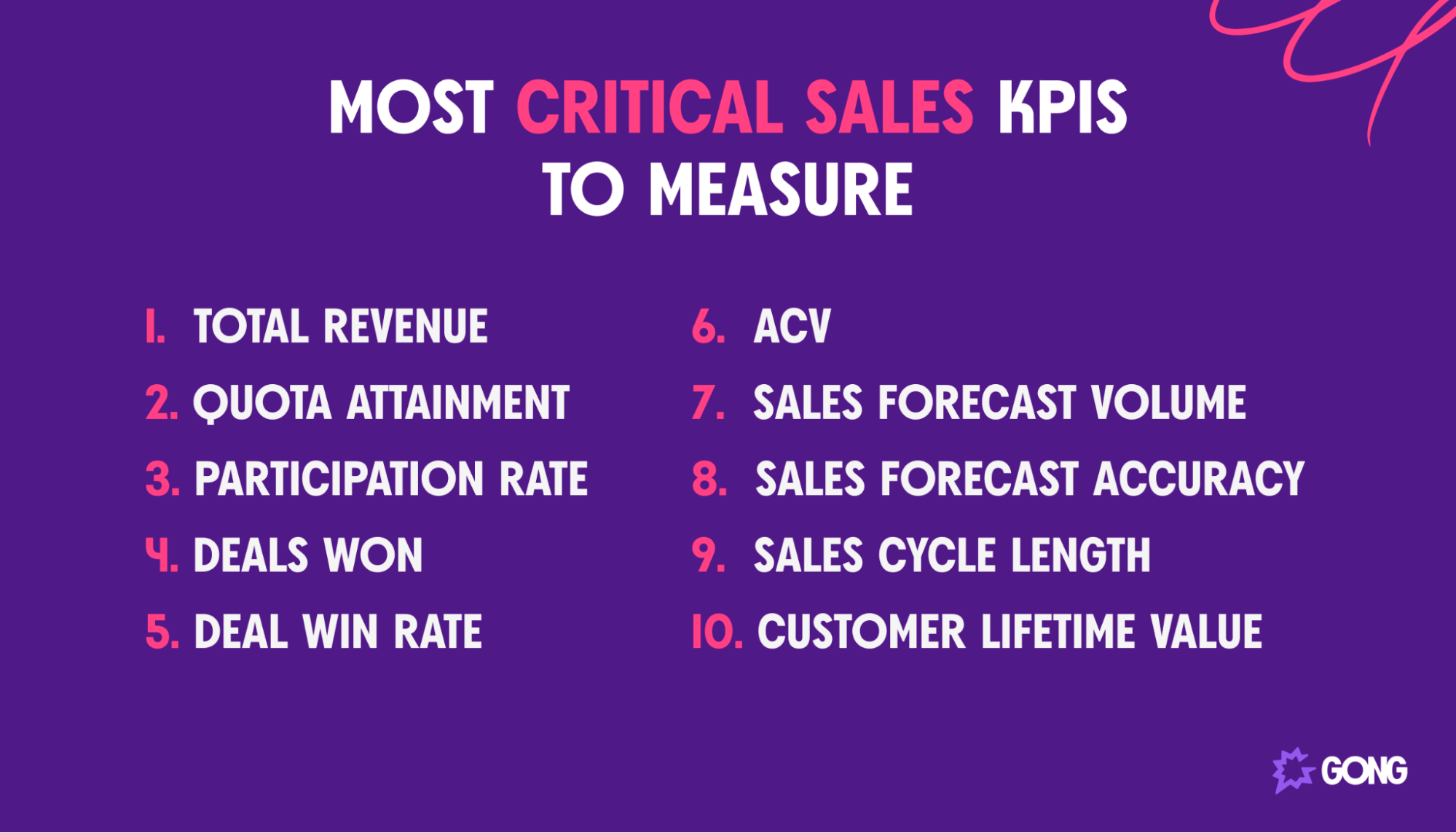
You can use the KPIs listed above on both a team and individual level to gauge performance. Ideally, though, you’ll compare these metrics to historical sales performance data to identify which areas are improving and which are declining.
Don’t forget to include activity metrics, like cold calls made, the connect ratio, and meetings booked, when benchmarking your sales reps’ performance. This will make it much easier to set realistic objectives.
Finally, take the time to identify areas that need improving that also align with the business objectives you highlighted in the first stage of this process. After all, there’s no point in setting a sales objective if it isn’t going to help you meet company targets.
If you have several areas ripe for improvement when goal setting, try to refrain from setting a bunch of different sales objectives. Instead, focus on one or two areas first. Otherwise, you risk overwhelming your reps.
3. Create SMART goals
It’s vital to give your sales reps clear instructions on meeting their sales objectives and the confidence to achieve them.
The best way to do this is to make sure every sales objective is a SMART goal.
No, we’re not being clever. SMART stands for:
- Specific: Don’t settle for a surface-level goal, like “reduce churn.” Explain how you want your sales reps to achieve that churn reduction or by how much you want to reduce it.
- Measurable: Make sure you can measure whether your reps hit their sales objectives or by how much they missed them. KPIs are your friend here.
- Attainable: You want your sales objectives to be ambitious, but you don’t want them to be impossible. Make sure you consider the assessment you made above when creating an objective.
- Relevant: Does your sales objective relate back to a wider business goal? Does it help you improve a part of the sales process that is lacking? If you answered yes to either of these questions, then your objective is relevant.
- Time-bound: Every good objective needs a timeframe so that you and your reps don’t keep pushing them back. Just make sure you give your reps enough time to achieve their objectives.
4. Assign objectives and incentivize
Your reps need to know what your sales objectives are if they’re to achieve them. So, now it’s time to assign objectives to individual reps or your sales teams as a whole.
In some cases, you’ll be able to sit down with a rep and tell them their objective, and they’ll be able to start working toward it immediately. In other cases, you may need to break down large sales objectives into smaller tasks.
Don’t just tell your sales teams their objectives once and forget about them.
Constant reminders are key, so make sales objectives a part of your team’s daily rituals. Write them up on your sales board, or have your reps write them on Post-It notes and stick them to their monitors. Make sure everyone on your team is regularly reminded of their objectives.
You may also choose to incentivize reps to achieve sales objectives in addition to their usual commission. But we’ll leave it up to you, as a team leader, to decide what will motivate your reps most.
5. Measure your success and iterate
Regular assessment is needed to ensure your team is on its way to meeting its sales goals.
This can come in the form of a sales report or by tracking KPIs.
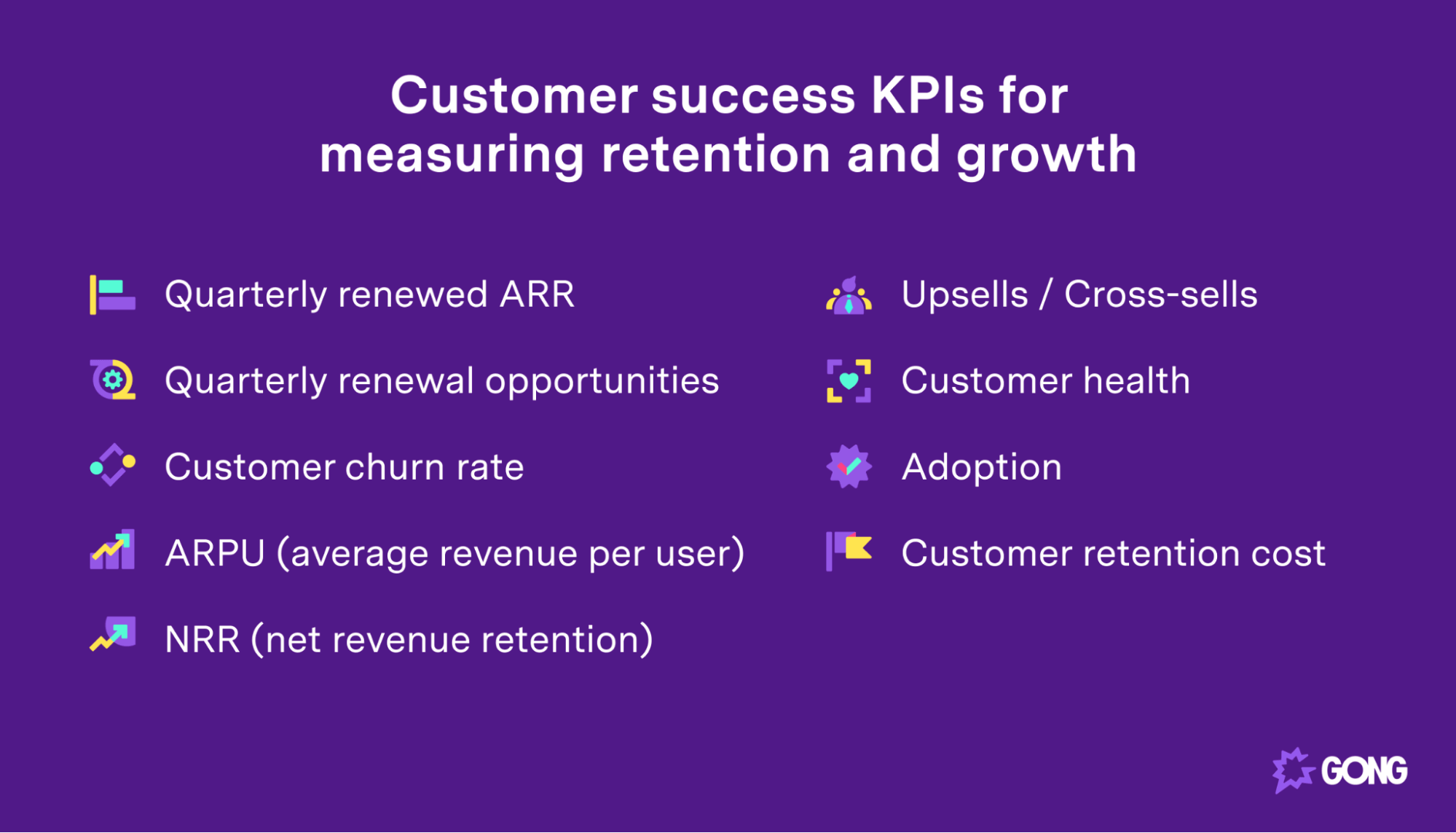
In either case, you’ll want to start tracking your team’s success from the moment you set objectives. That way, you can rectify things quickly if someone is struggling to hit their sales goal.
It can be tempting to change sales objectives when you get more data, but we’d caution you against doing so too quickly. You should only start making changes to objectives after you have gathered all the necessary data and once a period of time has passed.
You don’t want to be moving the goalposts one month into a three-month goal, for instance. Nor do you want to be changing sales objectives without a clear rationale of why you’re doing so.
Examples of SMART sales objectives
Do you want a sales goal example before creating your own objectives? Here are several specific, measurable, achievable, relevant, and time-based objective examples.
Reduce customer churn by 25% by the end of Q3
Sales reps could achieve this customer retention goal in several ways. For one, they could make sure every account they had in your pipeline matches your ICP. They could also increase the value they offer to buyers once they close deals.
Increase average deal size by 10% over the next two periods
Upselling and cross-selling are two of the best strategies sales reps can use to achieve this sales objective, assuming you aren’t willing to raise your prices. Sales reps could also target larger, enterprise-level accounts to increase profit margin.
Book 15 demo meetings next month
This is a great productivity-focused objective, especially for new sales reps who need to learn that making sales calls isn’t the same as having valuable conversations.
Add $250,000 worth of qualified leads to the pipeline in the next two months
In addition to setting goals for individual reps, consider setting team sales objectives, like a pipeline revenue target.
Shorten the sales cycle by using sales software
Don’t just set goals for reps — explain how you want them to achieve those goals. This can be incredibly valuable if you want to drive the adoption of a new piece of software or data set that also achieves the overall goal of shortening your cycle time.
Hit your sales objectives with Gong
Sales objectives can be incredibly motivating to your reps, make them even more accountable for their actions, and help them generate even more annual revenue. The right sales objectives can help boost your bottom line.
The trick is to align sales objectives with the wider goals of the company, take into account your existing sales performance, and make sure each objective is specific, measurable, attainable, relevant, and time-bound.
If you want to give yourself and your sales team the best chance of achieving your sales objectives, then download our High-Growth Sales Plan Template. Inside, you’ll find all of the templates your team needs to fine-tune their sales process, including buyer profile creation, sales forecasting, conversion mapping, and establishing proof.

